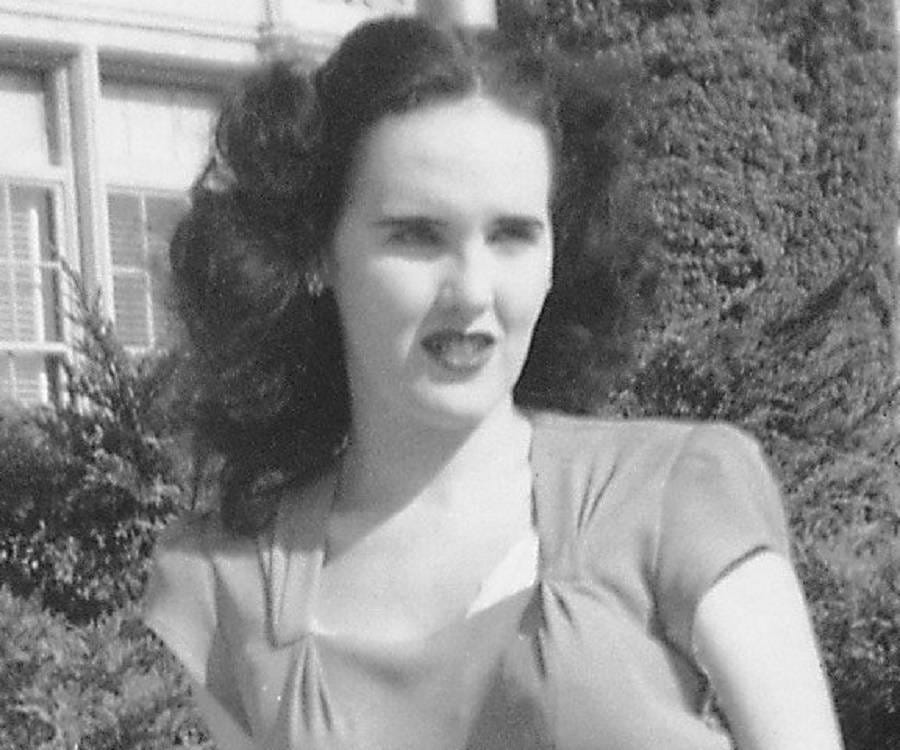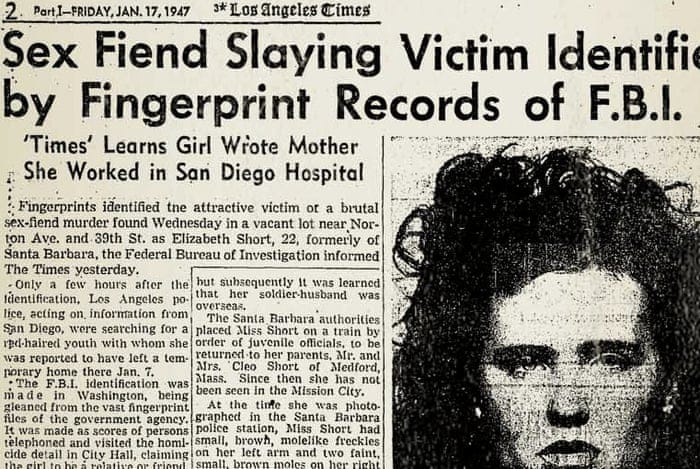The Making of America's Most Infamous Victim: Black Dahlia
How Elizabeth Short’s murder became a haunting symbol of Hollywood’s dark underbelly
In the early hours of January 15, 1947, a passerby discovered the bisected body of a young woman in a vacant lot in Los Angeles. Her name was Elizabeth Short—but the world would come to know her as the Black Dahlia. Nearly 80 years later, her brutal and unsolved murder still casts a long, seductive shadow over true crime media, noir cinema, and popular culture. It wasn't just the horror of the crime that made headlines—it was the imagery, the mystery, and the morbid allure of a woman transformed into a myth.
Over time, Elizabeth Short became more of a symbol than a person: fetishised by tabloids, fictionalised by filmmakers, and mythologised by a public hungry for spectacle. Her murder marked the beginning of America’s obsession with the “dead girl” narrative, a cultural fixation that continues to shape how we consume stories of violence, femininity, and fame. But behind the gruesome headlines and film noir fantasies lies a real woman whose life, dreams, and voice were all but erased.
Who was Elizabeth Short?
Elizabeth Short was born July 29, 1924, in Boston, Massachusetts. She was the third of five daughters of Cleo Alvin Short Jr and Phoebe May Sawyer.
Elizabeth’s childhood was quite troubled; her father was a US Navy sailor who had many issues. When she was younger her father built a miniature golf course and then in 1929 when the stock market crashed he lost all of his savings. In 1930 it was believed he had jumped off the Charles River and killed himself. Her mother would then then work as a bookkeeper to support the family.
Elizabeth then underwent lung surgery at 15 after having severe asthmatic attacks. Due to this her mother sent her to spend winters with friends in Miami for the next three years - as per medical advice given to her by doctors. This would lead to Elizabeth living between Massachusetts and Florida throughout her teenage years.
Elizabeth would then drop out of Medford High School in her sophomore year.
In late 1942, Elizabeth’s mother, Phoebe, received a letter from Cleo - turns out he was in fact alive and had faked his death. He was now starting a new life in California.
In December that same year, Elizabeth went to California to live with her father.
While living there Elizabeth worked at a military base in Camp Cooke (now Vandenberg Air Force Base), where she reportedly dated several servicemen. Her relationships—often romanticised or exaggerated in later accounts were marked by longing, vulnerability, and a desire for stability. She was described by friends and acquaintances as friendly, stylish, and reserved, though she struggled financially and often relied on acquaintances for housing.
Elizbaeth and her father would have many arguments, leading to her moving out in 1943.
After moving out, she went to Santa Barbara, where she was arrested for drinking at qa local bar while underage. Juvenile authorities sent her back to Massachusetts, but she returned instead to Florida, making only occasional visits to her family near Boston.
While in Florida, Short met Major Matthew Michael Gordon Jr., a decorated Army Air Force officer of the 2nd Air Commando Group, who was training for deployment to the Southeast Asian theatre of World War II. According to friends, he had proposed to Elizabeth through a letter, but he ended up dying in 1945.
Elizabeth relocated to Los Angeles in 1946, trying once more to break into acting. While she was there was working as a waitress and rented a room near a nightclub on Hollywood Boulevard.
She lived a transient life, moving between cheap hotels, acquaintances’ couches, and downtown diners. While often portrayed as a femme fatale in media myths, in reality, Elizabeth’s life reflected the hardship and precarity faced by many young women in post-war America, especially those drawn to Hollywood by the promise of fame and reinvention.
In the weeks before her death, she was largely unemployed, broke, and socially isolated. Her vulnerability and status as an outsider in the glitzy but unforgiving world of Los Angeles would later be exploited—not just by her unknown killer, but by a media machine eager to turn her into a noir icon.
Before her death, on January 9, 1947 she had returned from San Diego after visiting her married boyfriend - Manley. Manley would report that he dropped Elizabeth off at the Biltmore Hotel in downtown LA and that she had plans to meet one of her sisters.
By some accounts, staff of the Biltmore recalled having seen Elizabeth using the lobby telephone. Shortly after, she was allegedly seen by patrons of the Crown Grill Cocktail Lounge at 754 South Olive Street.
This was reportedly the last sighting.
What Happened and How Did Elizabeth Become “Black Dahlia”
On the morning of January 15, 1947, a mother taking her child for a walk in a LA neighbourhood, Leimert Park, stumbled upon the body of a young naked woman, sliced in half at the waist.
The young woman turned out to be Elizabeth Short. The press would call her 'the Black Dahlia’ as she was rumoured to have a liking for sheer black clothes and because there was a film called the Blue Dahlia out at the time of the murder.
Despite the extensive mutilation and cuts on the body, there wasn’t a drop of blood at the scene, indicating that the young woman had been killed elsewhere. Medical examiners determined she had been dead for up to ten hours. She had several cuts on her thigh and breasts, where entire portions of flesh had been sliced away. The lower half of her body was positioned a foot away from the upper, and her intestines had been tucked neatly beneath her buttocks. The corpse had been "posed", with her hands over her head, her elbows bent at right angles, and her legs spread apart.She had been slashed on the face, creating a ‘Glasgow Smile’ effect.
Short was identified after her fingerprints were sent to the Federal Bureau of Investigation (FBI); her fingerprints were on file from her 1943 arrest. Which is how they were able to identify Black Dahlia.
Following the identification of Elizabeth, a Los Angeles Examiner reporter contacting her mother, Phoebe, lying to her saying that her daughter had won a beauty contest. The LA reporter was then able to extract enough background information from Phoebe, then they told her that her daughter had been murdered.
The LA Examiner paid for Phoebe’s flights and accommodations to help with the police investigation, but it was actually a ploy to get an ‘insider scoop’ on how Black Dahlia was and create a sensationalized story.
The media would go on the nickname Elizabeth as the ‘Black Dahlia’, instead of using her real name, who was ‘prowling Hollywood Boulevard’ and that her murder was a ‘six field slaying’.
Many true crime books at the time would go on to claim that Elizabeth was a sex worker and that she was ‘unable to have sex’. Other rumours and false claims would go on to say that Elizabeth was a lesbian who hated having sex with men. Clearly all of these were very unfounded rumours.
The LAPD had formed a 60 person taskforce to work the case. They had over 150 suspects identified within the months that followed, ranging from ex-boyfriends and acquitances to literal strangers.
Police conducted extensive interviews, followed leads across state lines, and even used handwriting analysis to compare notes sent by someone claiming to be the killer.
A series of anonymous letters and packages were sent to authorities and newspapers, including one containing Elizabeth’s birth certificate, photographs, and personal papers. The killer signed it “The Black Dahlia Avenger,” though most of these leads went nowhere.
One of the few consistencies in the case was the surgical nature of the mutilation, which led investigators to believe the killer had medical training—possibly a doctor, surgeon, or someone with anatomical knowledge. This angle spurred the LAPD to investigate countless medical professionals in the area.
By spring of 1947, Elizbeth’s murder would become a cold case.
Many believe the case was doomed from the start due to police incompetence, media interference, and institutional sexism. Crime scenes were contaminated, leads were sensationalised rather than pursued, and the LAPD's relationship with local press blurred the lines between journalism and justice. Additionally, Elizabeth’s lifestyle—unmarried, financially unstable, often portrayed as sexually provocative—may have shaped how seriously her case was taken in a male-dominated justice system.
‘Dead Girl’ Trip and How the Case Captivated the Nation
What set the Black Dahlia case apart from other murder wasn’t just the narrative spun by a frenzied press, it was the fact that Elizabeth’s murder was seen as a ‘noir’ spectacle. The cultural obsession with the Black Dahlia quickly merged with the aesthetics of film noir, a genre that was peaking in Hollywood at the time. She became the real-life counterpart to the fictional femme fatales on screen: beautiful, doomed, and wrapped in shadows. Her story echoed the themes of postwar paranoia, moral decay, and the dangers of unchecked female sexuality.
Before the body had even been identified, reporters had begun crafting the character of “The Black Dahlia”: a mysterious, dark-haired beauty who had come to Los Angeles chasing fame, only to be swallowed by its shadows. Los Angeles film industry was booming at the time and many people were captivated to the idea of a scandal.
Elizabeth was quickly written into this - she was seen as a fallen starlet, despite no evidence that she was pursuing acting seriously. And her murder was a blend of sex, mystery and brutality.
The press zeroed in on her appearance and supposed lifestyle. They printed glamour photos of her in fashionable black clothing, dubbed her "a man-crazy adventuress," and speculated endlessly about her sexuality and romantic entanglements. In doing so, they turned her into a femme fatale archetype—a dead girl who became a canvas for male fantasies and cultural anxieties.
Black Dahlia is one of the most enduring examples of the ‘dead girl’ trope - where women’s suffering becomes the engine of the story rather than other aspects of their lives.
To everyone, especially a sexist media and police force, she was a narrative to be consumed and used as a source of entertainment and her trauma was an ‘aesthetic’.
In many ways, the Black Dahlia represents a turning point in American true crime: the moment when real horror and fictional spectacle fused into a new form of pop culture mythology—one where the victim’s story is less about justice, and more about fascination.







